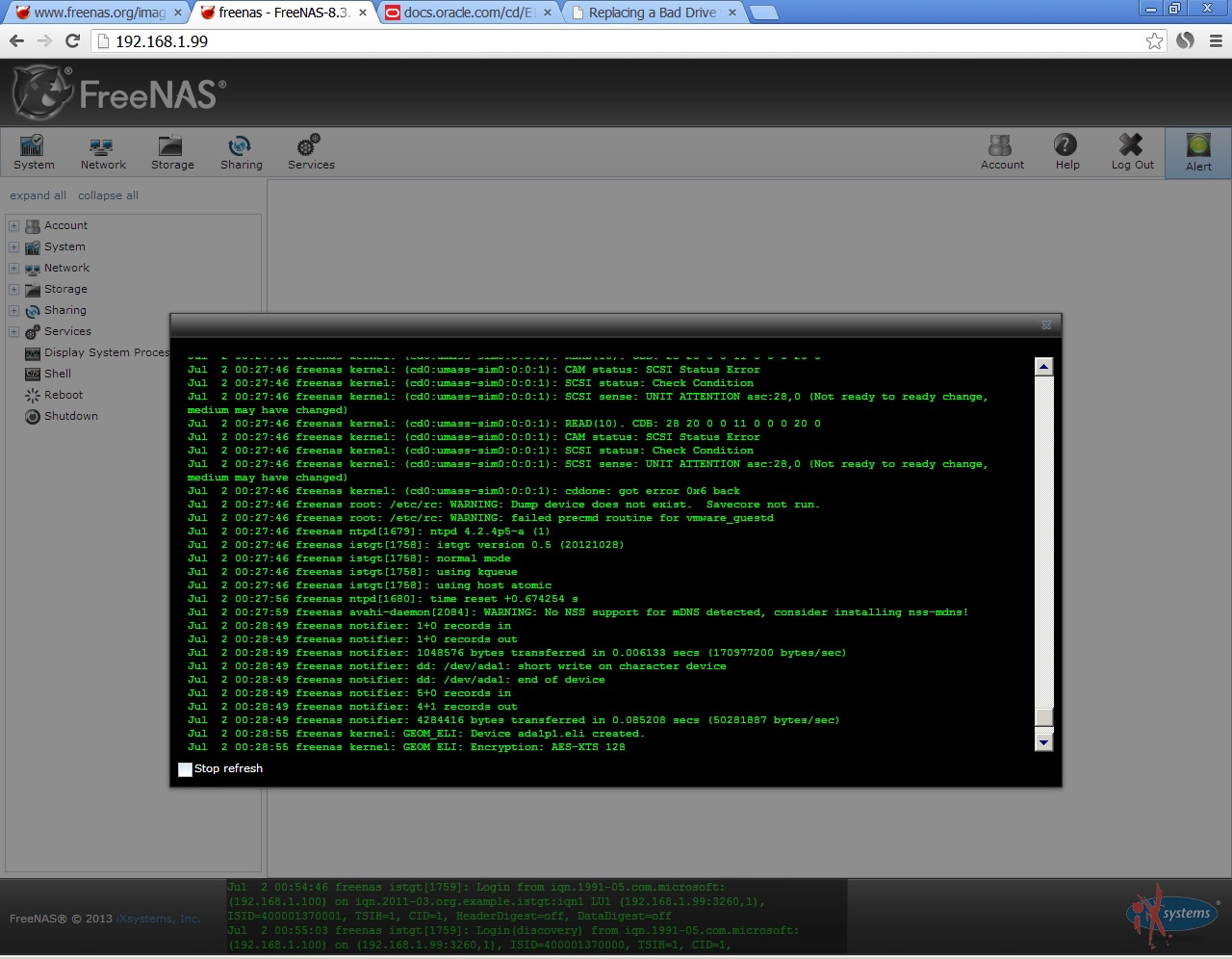Posted by JTSF at Tuesday, July 02, 2013
Read our previous post
Setup 1 - OS: FreeNAS 8.3.1
Installing FreeNAS
There are plenty of guides out there on installing and configuring FreeNAS. I will not waste time to go into specific details. Use these guides:
Install FreeNAS Guide 1 - Build-Your-Own-NAS-Server
Install FreeNAS Guide 2 - Roll Your Own Home Server
Install FreeNAS Guide 3 - FreeNAS Installing and Upgrading FreeNAS
FreeNAS Setup Summary
1. Download the FreeNAS-8.3.1-RELEASE-x64.img.xz file from SourceForge.
2. Extract the img.xz file using 7-Zip into an .img file
3. Write .img file onto your USB thumbdrive with Win32 Disk Imager.
4. Plug in thumbdrive to your NAS, connect keyboard, mouse, monitor, ethernet.
5. Power on NAS, boot from USB.
6. Go through Console Setup wizard.
7. After Console Setup wizard, access it via web browser at the IP address which you have configured earlier.
8. Username: admin password: freenas
9. Use Volume Manager to create your storage volume (this single procedure creates your VDev and ZPOOL)
FreeNAS Configuration Snapshot & Info
The following printscreens are captured after I have setup and configured FreeNAS. These snapshots cover crucial configurations & info while default configurations are omitted.
*Image are 1280x 996; click to enlarge ; if still unclear - right click \ View Image \ Zoom Icon
System Info
Settings \ Advanced
By enabling Autotune, the system generate and add Sysctls & Tunables Config
Logs
Services
Processes
Click here for FreeNAS Tests Results






hi, have you think of running other OS, such as Fedora, Ubuntu?
ReplyDeleteNot at the moment. When I first started out on this project, my focus is on NAS operating systems. These OS are lightweight on resource utilization so that you get the fullest out of a budget CPU. They also feature user friendly GUI and most of all, a resilient RAID system like ZFS, Synology Hybrid RAID, etc.
ReplyDeleteI would suggest Ubuntu and Linux as the base OS only if you plan on using your NAS as a multimedia / multi-function server. But do note that it increase the power consumption for any other additional tasks assigned.
Wondering if NAS4Free was a possible OS you would test. It is the continuation of the original FreeNAS versions before FreeNAS 8. In my testing I have found it to be one of the easier OSes to setup and performance for me has been better than FreeNAS.
DeleteBy the way fantastic job writing everything up.
00Roush
Thanks for the suggestion. Yes, I have also heard positive feedbacks about NAS4Free. If I have spare time, I will perform the same tests for it.
DeletePlease check your Blog settings because it is very hard to read with the type overlapping
ReplyDeleteI don't quite get what you meant.
DeleteMy blog looks ok on both Firefox and Chrome, browsing it from Win7 desktop.
This comment has been removed by the author.
DeleteIf you are having problem viewing this page using IE9, please switch on the "compatible view" mode.
Delete